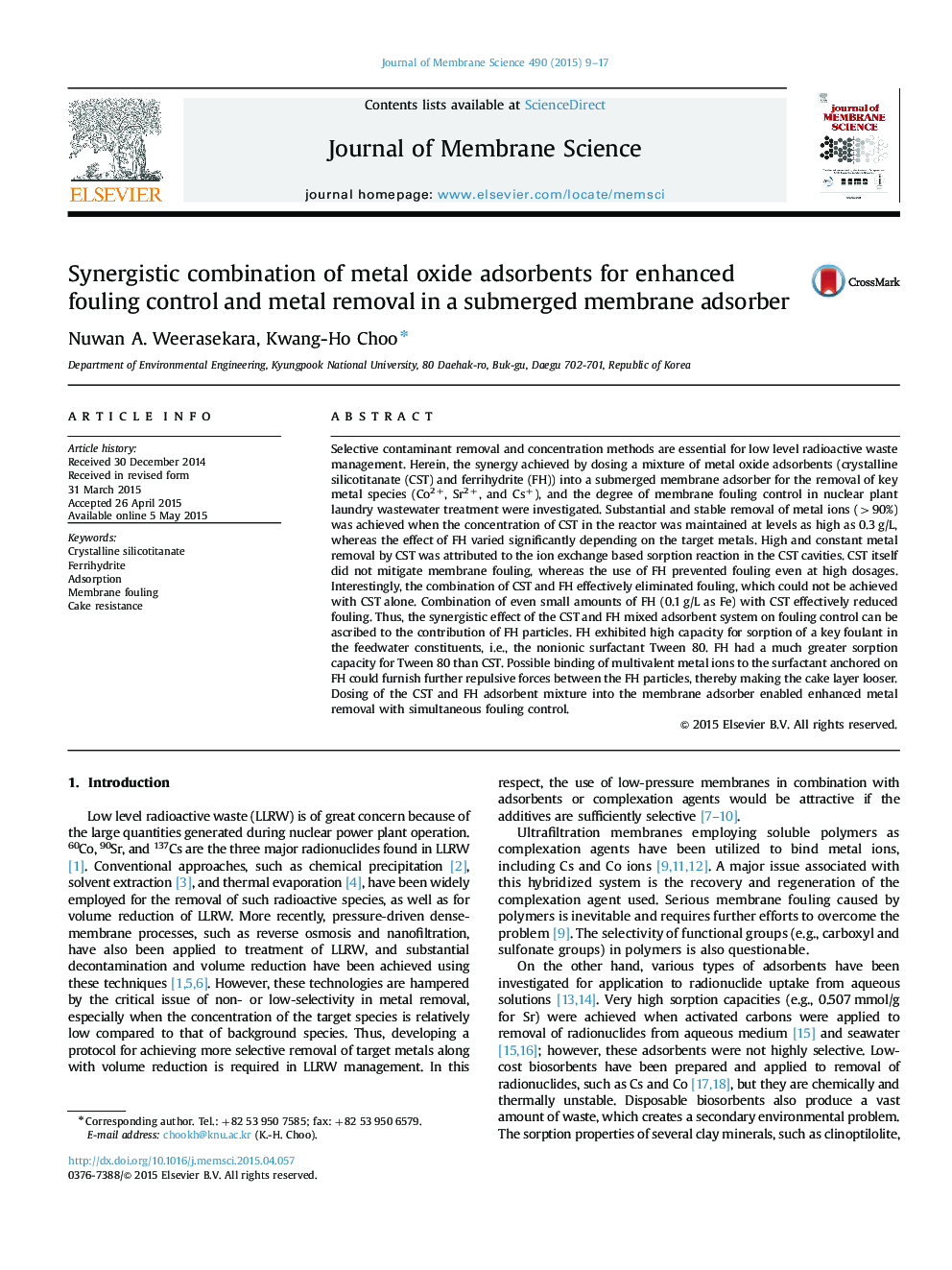| کد مقاله | کد نشریه | سال انتشار | مقاله انگلیسی | نسخه تمام متن |
|---|---|---|---|---|
| 633017 | 1456009 | 2015 | 9 صفحه PDF | دانلود رایگان |
• Fouling control and metal removal were tested using mixed metal oxide adsorbents.
• Greater sorption with crystalline silicotitanate occurred and ferrihydrite mitigated fouling.
• Synergistic fouling control and metal removal were achieved with adsorbent mixture.
• Nonionic surfactants contributed most to membrane fouling due to cake formation.
• Surfactant adsorption/metal binding on ferrihydrite reduced cake layer resistance.
Selective contaminant removal and concentration methods are essential for low level radioactive waste management. Herein, the synergy achieved by dosing a mixture of metal oxide adsorbents (crystalline silicotitanate (CST) and ferrihydrite (FH)) into a submerged membrane adsorber for the removal of key metal species (Co2+, Sr2+, and Cs+), and the degree of membrane fouling control in nuclear plant laundry wastewater treatment were investigated. Substantial and stable removal of metal ions (>90%) was achieved when the concentration of CST in the reactor was maintained at levels as high as 0.3 g/L, whereas the effect of FH varied significantly depending on the target metals. High and constant metal removal by CST was attributed to the ion exchange based sorption reaction in the CST cavities. CST itself did not mitigate membrane fouling, whereas the use of FH prevented fouling even at high dosages. Interestingly, the combination of CST and FH effectively eliminated fouling, which could not be achieved with CST alone. Combination of even small amounts of FH (0.1 g/L as Fe) with CST effectively reduced fouling. Thus, the synergistic effect of the CST and FH mixed adsorbent system on fouling control can be ascribed to the contribution of FH particles. FH exhibited high capacity for sorption of a key foulant in the feedwater constituents, i.e., the nonionic surfactant Tween 80. FH had a much greater sorption capacity for Tween 80 than CST. Possible binding of multivalent metal ions to the surfactant anchored on FH could furnish further repulsive forces between the FH particles, thereby making the cake layer looser. Dosing of the CST and FH adsorbent mixture into the membrane adsorber enabled enhanced metal removal with simultaneous fouling control.
Figure optionsDownload high-quality image (200 K)Download as PowerPoint slide
Journal: Journal of Membrane Science - Volume 490, 15 September 2015, Pages 9–17
